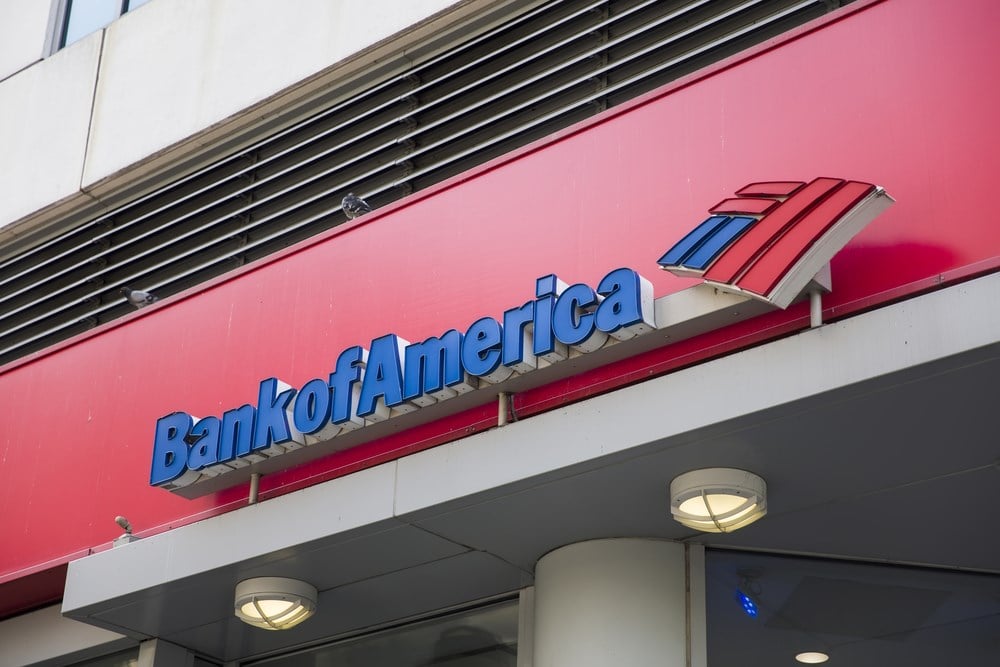
Bank of America (NYSE: BAC) has blown past analysts' expectations on top-line and bottom-line earnings, leading to a 13% year-on-year net revenue growth and a respective 15% net income growth by the same measure; earnings per share were reported at 94 cents. The push in revenue came amid growth across the bank's fixed-income trading desk offset by equities trading facing the recent volatility seen in the overall American equities market tied to rising interest rates, elevated inflation levels and a boost in recession fears.
While other banks in Bank of America's peer group have reported declining efficiency ratios, negative book value per share discounts and slowing loan-to-deposit ratios (one of the main drivers of net interest income), Bank of America earnings have showcased resilient performance across all of the previous key performance indicators. Citigroup Inc. (NYSE: C) reported a loan-to-deposit ratio below 50%, Wells Fargo & Company (NYSE: WFC) stated the same metric above 65% amid a decline in total deposits.
Bank of America's ratio ended at 54.5% purely driven by an increase in overall loans alongside a $5.1 million increase in interest-bearing deposits. Several segments helped push higher book value per share for investors, which allows for current bullish analyst sentiment in the stock.
What Investors Care About
A key source of bank revenue is found in the net interest income (NII), driven by the loan balances reported for a given period generating such income. Bank of America reported a year-on-year increase in net interest income of 25%, bringing in $14.4 billion versus $11.5 billion a year prior, driven by a total loan and lease balance annual growth of 7%. Loans and leases were pushed by a 15% increase in global markets lending and a 7% increase in consumer banking lending, offset by a 35% decline in the residential mortgage space due to rising mortgage rates.
Deposits have been a concern for investors facing the pressure and bearish sentiment that overhauled the financial sector following the liquidity crisis in SVB Financial Group (NASDAQ: SIVB). However, deposits for the overall corporation grew by 2% quarterly and 26% annually. The growth in deposits stems mainly from interest-bearing deposits, as the bank started offering higher yields on these accounts, offset by a decline in non-interest-bearing deposits as consumers fled these accounts due to the same yield dynamics. An overall increase in deposits for Bank of America allows sustained liquidity and the ability to generate loans on these deposits and drive additional NII.
Driving Value Creation
Bank of America stock rallied by 11% in April as investors anticipated the increases in NII that would come from the influx of deposits seen earlier in the year. However, despite reporting positive figures and growing charts across the board, shares are down by nearly 1.3% in today's trading session as management pointed to a possible 2% decline in net interest income for the next quarter. Although an adverse reaction in the stock can be attributed to other banks like JP Morgan Chase & Co. (NYSE: JPM) providing positive guidance in the net interest income department, Bank of America may play a conservative card as residential mortgages take a back seat as consumers face higher mortgage rates and recession fears.
Whatever the future may hold for NII expectations, the bank has showcased its efficiency capabilities in its underlying operations, lowering its efficiency ratio from 64.7% to 63.6% every quarter. A declining efficiency ratio (calculated as total operating expenses divided by total net revenue) indicates profitability. Higher revenue retention allowed for a significant increase of 2% in book value per share for a current value of $34.25, providing a discount to book value of 10% to 13% based on today's stock price.
Credit card losses have shown an upward trend this earnings season for most banks. Bank of America is no exception, clocking in net charge-off increases of $122 million driven by higher credit card losses. Net charge-offs in credit card losses increased to 0.32% as a ratio of total allowances, up from 0.16% a year ago; however, the accounts that were charged-off as a loss came from lower FICO score consumers, which has, as a result, opened the path for an overall average FICO score composition of 774 for the first quarter of 2023 up from an average of 770 a year prior. A higher quality credit card balance base can provide further stability and reduced realized charge-offs moving forward, reflecting increased retained earnings and book value per share.